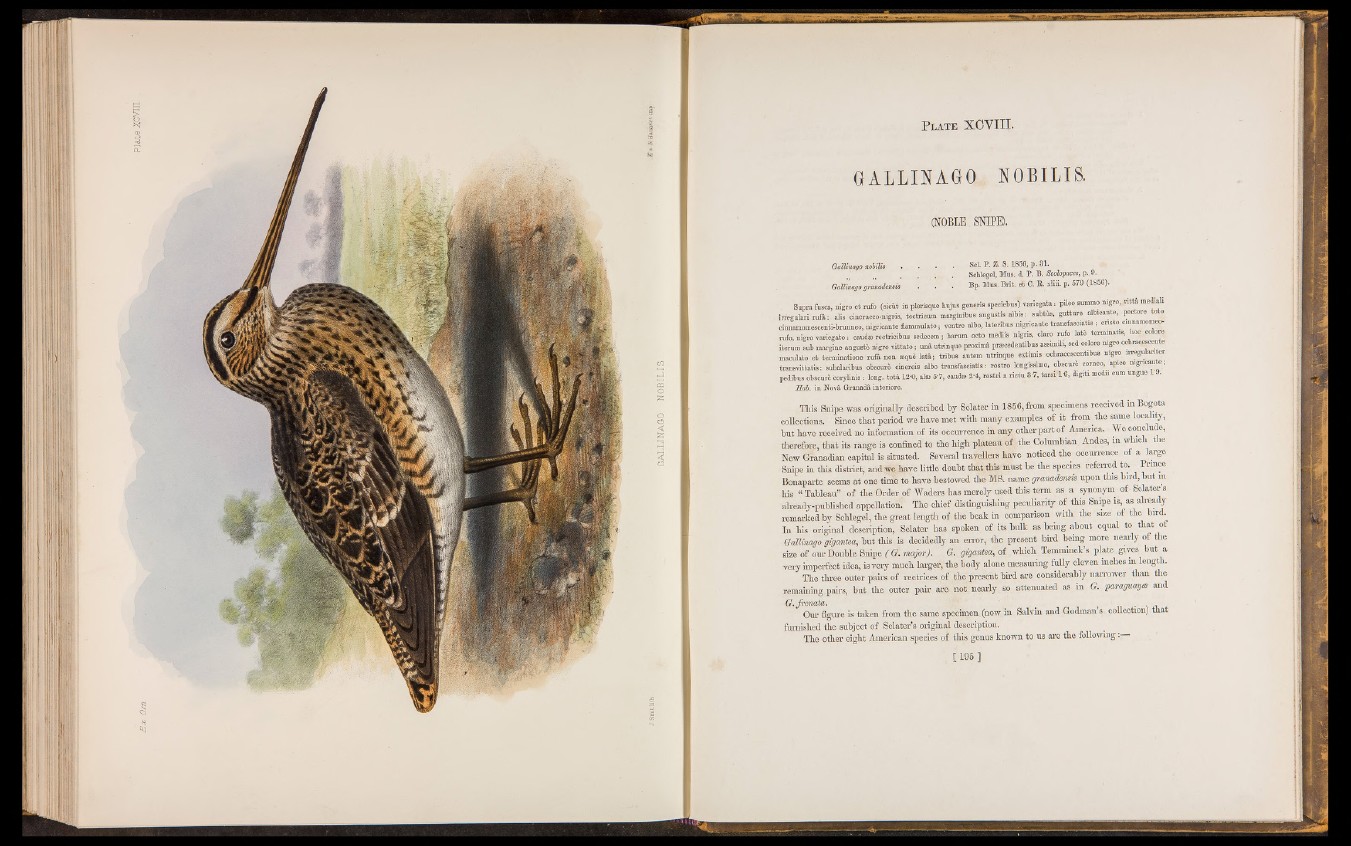
Ililll
lìl.illi
i9l
I P l a t e XOVIIIG
A L L IN A GO NOB IL IS .
(NOBLE SNIPE).
Gallinago n o lilis Scl. P . Z. S. 1856, p . 81.
Schlegel, Mus. d. P . B. Scolopaces, p. 9.
Bp. Mtm, B r it, e t C. E . xliii. p. 579 (1856).
S o p ra toaca. oigro e t ro fo (aieilt in ple risq n e i n ju s gonetia sp e ciebm) v a rieg ata i pileo aummo nig ro , r i t t i mediali
irreg u la ri t n S : alia eineraeeo.nigria, te etricum m a rg iiib n . an g u stia alMa : aubtba, g u ttu r e albicante, pe cto re to to
oimiamomesoenti-brunnee, n ig ric an te Sammulato ; v e n tre albo, l.lo rib n a n ig ric an te tran a f.a e ia tia i eriaso c .n n am o o eo -
ru fo n ig ro variegato ; eandæ reotricibna aedeoem ; b a rum octo mediia n igris, e la te rufo la te te rm in atis, hoe eoloto
ite ium sub margino an g u ste n ig ro v itta lo ; im i n trin g u e p ro v im i præcedontibus assimili, sed coloro n ig ro ochracoscente
maonlato e t te rm in atio n e ru ra no n mqnè la ta ; tr ib u s au tem « trin q u e eutimia o cb ra ec .cen tib n s n ig ro irreg o la rito r
tra n s v itta tia i anbalaribus obsourò oinereia albo tronafaaciatia : ro a tro longiaaimo, obseurb corneo, apico n ig n c a n te ,
pedibns obsonrè o o rjlin is i long, t o l i 12-0, aim 6 7 , oandio 2-4, r o s tr i a r ic tu 3-7, ta rs i 1-6, d ig iti medii cum nngno J.
Ha b . in N o v â G ran ad â inte riore .
This Snipe was originally described by Sclater in 1856, from specimens received in Bogota
collections. Since that period we have met ivith many examples o f it from the same locality,
but have received no infoi-mation o f its occurrence in any other part o f America. Y c conclude,
therefore, that its range is confined to the high plateau o f the Columbian Andes, in which the
New Granadian capital is situated. Several travellers have noticed the occun-ence o f a large
Snipe in this district, and we have little doubt that this must he the species refeiTcd to. 1 rince
Bonaparte seems at one time to have bestowed the MS. name granadensis upon this bird, but m
his “ Tableau” o f the Order o f Waders has merely used this term as a synonym o f Sclater s
already-published appellation. The chief distinguishing peculiarity o f this Snipe is, as already
remarked by Scblegel, the gi-eat length o f the beak in comparison with the size o f the bird.
In his original description, Sclater has spoken o f its bulk as being about equal to that ot
GalUnago gigantea, but this is decidedly an error, the present bird being more nearly o f the
size of our Double Snipe / (? . major). G. gigantea, o f which Temminck’s plate gives but a
very imperfect idea, is very much larger, the body alone measuring fully eleven inches in lengt i.
The three outer pairs o f rectrices o f the present bird are considerably narrower tban the
remaining pairs, but the outer pair are not nearly so attenuated as in G. paraguayce and
G. frenata. * \ i
Our figure is taken from the same specimen (now in Salvin and Godman’s collection) that
famished the subject o f Sclater’s original description.
The other eight American species o f this genus known to us are the following:
[ 195 ]